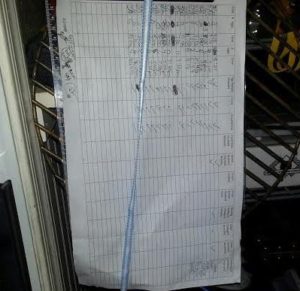Sell Eggs from Profit, Right Out of Your Backyard
Demand for naturally grown, wholesome foods is rising. Even city-folk are choosing to grow and raise some of what they eat, right in their own backyards. Urban hens are becoming quite popular. Some chicken-keepers choose to offset the cost of raising the birds by selling excess eggs to an eager public. In some parts of the country, a dozen farm fresh eggs sells for upwards of $8 per dozen, and they sell out early at farmers markets. The demand is high; the supply is low. And many states have very relaxed rules concerning egg sales. So how does a backyard farmer start to sell eggs?
1. Find out what the rules are in your state, county or city.
In the state of Arizona, where I live, backyard farmers are allowed to sell 750 dozen eggs per year without a license. The only requirement to sell eggs is to register as a “Nest Run” egg producer. Registration involves a one-page application and no fee. As nest run producers in AZ, we are not allowed to advertise our eggs as “fresh” or “local.” Find out what the rules are in your state and follow them. In AZ, visit this link to register.
2. Prepare a food safety management plan.
If you are going to sell eggs to the public, it is important to ensure that the eggs are safe for consumption. And if a customer claims that they got sick after eating an egg that you sold to them, it is critical to be able to show the authorities your food safety plan. Your records go a long way to prove that you were not negligent. In many states, there are no specific rules that you must follow. The burden falls upon the farmer to come up with a plan and to stick to it. See links to sample plans at the end of this article.
3. Document your management and egg collection practices.
Once you come up with your plan, it is important to document your daily activities to prove that you are carrying it out. Create an Excel or other spreadsheet and keep it handy. Include the date, time and management activities, such as when and how many eggs are collected. Also document how the eggs are handled, when egg collection and storage containers are cleaned, nesting box cleanings, and so forth. This is helpful to prove that you are following your safety plan. It is also a helpful resource to show fluctuations in egg production activity.

4. Maximize profits.
The egg spreadsheet is a helpful resource to show fluctuations in production activity. For example, if you are keeping track of how many eggs you collect daily, you many notice that a change in the type of feed or bedding that you use is followed by a drop or an increase in egg production. This kind of information can help you to maximize production while keeping costs as low as possible.
5. Keep the spreadsheet handy.
At our farm, we keep a spreadsheet on a clipboard with a pen. It hangs on a nail with our egg collection basket. Its close proximity reminds us to fill it out each time that we collect eggs. You can find a copy of our spreadsheet posted to our blog here.
6. Package your eggs in an appealing manner with your own labels.
In AZ, if egg cartons are reused, any labels or logos present on the packages must be obliterated. The date and your name and contact information should be posted on the package. Also include safe handling instructions, such as “To prevent illness from bacteria: keep eggs refrigerated, cook eggs until yolks are firm, and cook foods containing eggs thoroughly.” Take your eggs to social functions and begin spreading the word that you are selling them. You may find that you have more customers than eggs and need to begin to take orders.
7. Keep change handy so that you are able to make an instant sale to your happy customer.
At our farm, we keep a bank bag with change. Money from egg sales goes into the bag and sales are recorded in our accounting software. Feed and supply purchases are made out of this bag as well, and recorded. In this way, the money from egg sales is kept separate from our other farm income and expenses. This aids us in keeping track of whether or not egg income is enough to cover the expense of keeping the hens.
8. Educate your customers. Farm eggs come in varying sizes and colors.
Backyard eggs contain small spots or deformities to which shoppers are not accustomed. Inform your customers why some eggs are smaller than others, and why their shells and yolks can have different appearances. Extol the virtues of farm fresh eggs. Don’t be too shy to brag about why your hens and your eggs are better than the store-bought variety. And, of course, offer to replace any egg that they discover is cracked, spoiled or otherwise inedible.
A sample plan is located at Food Safety for Egg Producers. Scroll to the bottom of the page to open the link.
Another helpful link is located at the University of Minnesota extension website: Food Safety Checklist for Farm Fresh Eggs.


